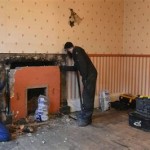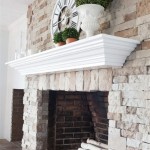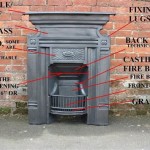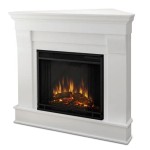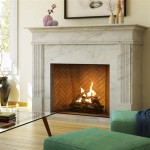Fireplace Installation Cost: A Comprehensive Guide
Installing a fireplace can transform the ambiance of a home, providing warmth, visual appeal, and even increasing property value. However, understanding the costs associated with fireplace installation is crucial for homeowners planning this project. The overall cost can vary significantly based on several factors, including the type of fireplace, installation complexity, materials used, and geographical location. This article provides a detailed breakdown of these cost factors, offering insights into the potential expenses involved in adding a fireplace to a home.
Factors Influencing Fireplace Installation Costs
The cost of installing a fireplace is not a fixed number. It depends on a multitude of elements that interact to determine the final price. To effectively budget for this project, homeowners need to understand these influencing factors and how they contribute to the overall expense.
Type of Fireplace: This is arguably the most significant cost driver. Different types of fireplaces, such as wood-burning, gas, and electric, have vastly different installation requirements and associated expenses. Wood-burning fireplaces generally require a chimney, which can be a significant expense if one doesn't already exist. Gas fireplaces, while often cheaper to operate, need gas line connections and venting. Electric fireplaces are the simplest to install, often requiring only a dedicated electrical circuit.
Installation Complexity: The complexity of the installation depends on the existing structure of the home and the desired location of the fireplace. Installing a fireplace in an existing wall is generally less expensive than building a new chimney or creating a custom fireplace surround. Projects that require significant structural modifications, such as reinforcing floors or altering walls, will significantly increase the overall cost.
Materials Used: The materials chosen for the fireplace surround, mantel, and hearth significantly impact the project's cost. Options range from basic brick or concrete to more expensive materials like marble, granite, or custom woodwork. The choice of materials often reflects the homeowner's aesthetic preferences and budget constraints.
Chimney or Venting Requirements: A significant portion of the fireplace installation cost is tied to chimney or venting requirements. Wood-burning fireplaces necessitate a functional chimney for safe exhaust of smoke and combustion byproducts. Gas fireplaces also require venting, though the type of venting can vary depending on the model. Ventless gas fireplaces, while potentially cheaper to install, may have restrictions based on local building codes. Electric fireplaces do not require venting.
Labor Costs: Labor costs vary based on the geographic location and the contractor's experience. More experienced contractors may charge higher rates, but their expertise can ensure a safe and efficient installation. Obtaining multiple quotes from qualified professionals is crucial to compare pricing and ensure the contractor is licensed and insured.
Geographic Location: The cost of labor and materials can fluctuate significantly based on geographic location. Metropolitan areas often have higher labor costs than rural areas. Similarly, the availability and pricing of certain materials can vary depending on the region.
Permits and Inspections: Local building codes often require permits for fireplace installation. The cost of these permits varies depending on the municipality. Inspections are also necessary to ensure the fireplace meets safety standards. Failure to obtain necessary permits can result in fines and potential safety hazards.
Additional Features: Additional features, such as a blower fan, remote control, or custom lighting, can add to the overall cost. These features can enhance the fireplace's functionality and aesthetic appeal but should be factored into the budget.
Cost Breakdown by Fireplace Type
Understanding the cost differences between various fireplace types is essential for homeowners to make informed decisions based on their budget and preferences. Each type has distinct installation requirements that directly impact the overall price.
Wood-Burning Fireplaces: Wood-burning fireplaces are often the most expensive to install, particularly if a chimney needs to be built or repaired. The average cost for installing a new wood-burning fireplace ranges from $2,000 to $10,000. The cost of constructing a new chimney can add an additional $4,000 to $15,000, depending on its height, materials, and complexity. Factors that can increase the cost include the need for a fireproof hearth, chimney caps, and damper installation. Regular maintenance, such as chimney cleaning, is also required to ensure safe operation and prevent chimney fires.
Gas Fireplaces: Gas fireplaces offer a balance between cost and convenience. Installation typically ranges from $2,500 to $8,000, including the cost of the fireplace unit, gas line installation, and venting. The cost of running a gas line can vary depending on the distance from the existing gas meter and any obstacles in the path. Direct-vent gas fireplaces, which vent directly to the outside, are generally more expensive than vent-free models. However, vent-free models may be restricted by local building codes due to concerns about indoor air quality. Gas fireplaces require professional installation by a licensed gas fitter to ensure safe and compliant operation.
Electric Fireplaces: Electric fireplaces are the most cost-effective option for many homeowners. Installation costs typically range from $500 to $3,000, primarily consisting of the cost of the unit and electrical work. Electric fireplaces can be plugged into a standard outlet or hardwired into a dedicated circuit. Hardwiring may be necessary for larger models or if the home's electrical system is older. Electric fireplaces are relatively easy to install, making them a popular choice for DIY enthusiasts. However, it is always recommended to consult with a qualified electrician to ensure the electrical connections are safe and compliant with local codes. Mantels and surrounds can be purchased separately to enhance the aesthetic appeal of the electric fireplace.
Ethanol Fireplaces: Ethanol fireplaces are ventless and use liquid ethanol fuel to produce a real flame. Installation costs are generally lower than gas or wood-burning fireplaces, ranging from $500 to $4,000, depending on the size and style of the unit. Ethanol fireplaces do not require a chimney or gas line, making them suitable for apartments and homes without existing fireplaces. However, it's essential to consider the cost of ethanol fuel, which can be relatively expensive compared to natural gas or firewood. Furthermore, adequate ventilation is critical when using ethanol fireplaces to prevent the buildup of carbon monoxide and other combustion byproducts.
Strategies for Managing Installation Costs
While fireplace installation can be a significant expense, homeowners can implement several strategies to manage costs without compromising quality or safety. Careful planning and diligent research are crucial to staying within budget.
Obtain Multiple Quotes: Getting quotes from at least three different contractors is essential to compare pricing and ensure fair market value. Each quote should include a detailed breakdown of the materials, labor, and permits required for the project. Carefully review each quote to identify potential discrepancies and ensure the contractor is licensed and insured. Avoid selecting the lowest bid without thoroughly evaluating the contractor's qualifications and reputation.
Consider Alternative Fireplace Types: If budget is a primary concern, consider alternative fireplace types, such as electric or ethanol fireplaces. These options typically have lower installation costs compared to wood-burning or gas fireplaces. Electric fireplaces offer the added benefit of being energy-efficient and requiring minimal maintenance.
Choose Affordable Materials: Selecting more affordable materials for the fireplace surround and mantel can significantly reduce costs. Brick, concrete, and reclaimed wood are cost-effective alternatives to more expensive materials like marble or granite. Consider purchasing materials during sales or clearance events to save money.
DIY Certain Aspects of the Project (with caution): Homeowners with experience in carpentry and electrical work may be able to DIY certain aspects of the project, such as building the fireplace surround or installing the mantel. However, it is crucial to exercise caution and ensure any DIY work complies with local building codes. Improper installation can pose serious safety risks, particularly with gas or wood-burning fireplaces. Always consult with a qualified professional for any work involving gas lines, electrical connections, or chimney construction.
Schedule Installation During Off-Peak Seasons: Contractors are often less busy during off-peak seasons, such as spring and summer, which may result in lower labor costs. Scheduling the installation during these times can also provide more flexibility and allow for a quicker project turnaround. Avoid scheduling installations during the holiday season when demand for contractors is typically higher.
Explore Financing Options: Several financing options are available to help homeowners manage the cost of fireplace installation, including home equity loans, personal loans, and credit cards. Compare interest rates and repayment terms from different lenders to find the best option for your financial situation. Some contractors may also offer financing options directly to their clients.
Consider Long-Term Operating Costs: While the initial installation cost is important, it's also essential to consider the long-term operating costs associated with different fireplace types. Wood-burning fireplaces require ongoing expenses for firewood, while gas fireplaces incur gas bills. Electric fireplaces are generally the most energy-efficient option, but their electricity consumption should be factored into the overall cost.
By carefully considering these factors and strategies, homeowners can effectively plan and budget for fireplace installation, ensuring a successful and affordable project that enhances the comfort and beauty of their home.

How Much Does It Cost To Put In A Fireplace Direct Fireplaces

What Does It Cost To Install A Fireplace Vs Wood Stove Stamford Fireplaces

How Much Does A Gas Fireplace Cost Fireplaces Direct Learning Center

Estimated Page Fireplaces Stoves Inserts Wood Gas Pellet

ᑕ❶ᑐ How Much Do Fireplace Built Ins Cost Get The Guide

How Much Does An Electric Fireplace Cost 2024 Data

How Much Does A Gas Fireplace Cost Fireplaces Direct Learning Center

Gas Fireplace S Installation Cost 2024 Oneflare

2024 Fireplace Installation Costs Gas Wood Burning Electric

Gas Fireplace Cost Guide Unit Add Ons Installation More

